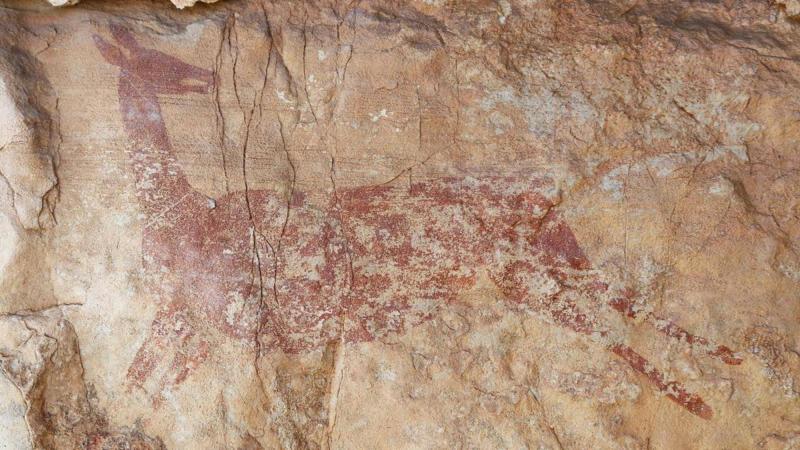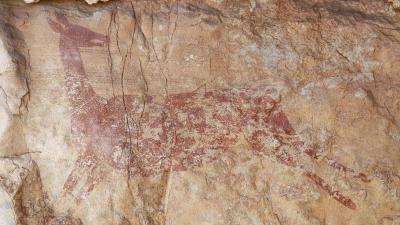Spanish researchers have discovered paintings that are 7,500 years old in a cave in the town of Castillet in the Teruel province of Spain. Among these is a painting depicting a person climbing a ladder to obtain honey from a hive. According to a scientific article detailing the story of these drawings published in the Spanish journal Trabajos de prehistoria, the well-preserved paintings are the most detailed found in the Iberian Peninsula.
The discovery site is called Baranco Gómez, and its central area measures about 12.5 meters; the drawings are located across three different panels. In the first panel, a character with well-defined facial features can be seen climbing a ladder to reach a beehive. The scene suggests that during the time of the drawing, advanced techniques for climbing were used, as the ladder was secured at the top before ascending, close to the beehive, with a post in the middle to stabilize the ladder on the rock.
One panel includes a scene of honey extraction, while another depicts hunting scenes with archers and deer. The third panel features a scene of honey collection, with elements from the same cave contributing to the composition: the honey gathering is depicted on both the wall and ceiling, utilizing both surfaces to better represent the scene.
The Baranco Gómez site is located on the banks of the Guadalop River, an area that includes many sites featuring models of prehistoric rock art in the Mediterranean basin, also known as Eastern art. Researchers noted that such discoveries "emphasize the need to review new and old areas through systematic excavation" to redefine Eastern art "according to its artistic, stylistic, and regional relationships."




